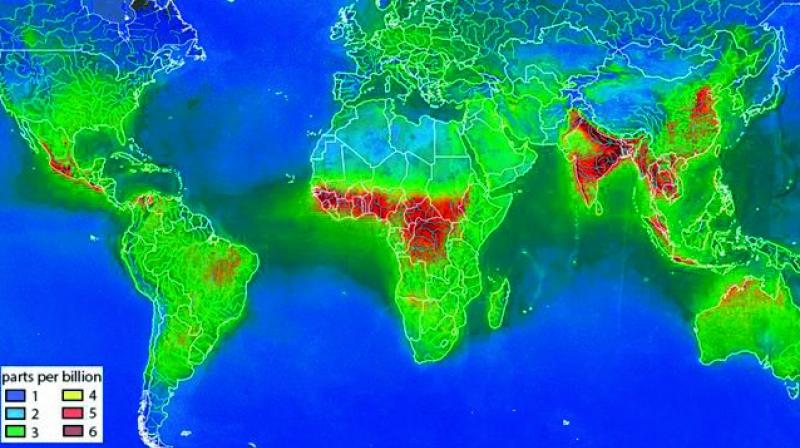Satellite images have show toxic gas envelopes sky over India

Hyderabad: The latest satellite images have shown that India's air as seen from space is different. The images captured by Europe's Sentinel-5P satellite which was launched to track the global air quality in October 2018, found the air above India and surrounding South Asian nations to be 'distinct'.
A report by the BBC says that the distinct colour of air is because of elevated levels of a gas called formaldehyde - a colourless gas that is naturally released by vegetation but also from a number of polluting activities.
The Environmental Protection Agency (EPA) identifies Formaldehyde (HCHO) as one of the most important carcinogens in outdoor air among all other identified hazardous air pollutants (HAPs).
Pollution experts say that the elevated level of formaldehyde is an indicator of increasing levels of pollution in the South Asian countries. Experts believe that the polluted air hovering over these countries originates from the burning of vegetation which contains different sorts of volatile organic compounds. Researchers studying these images said that 60-80% of the signal is from some biogenic origin. In addition to that there is pollution and fire, especially during the crop burning by the farmers in North India.
According to a 2014 study by the Indian Agricultural Research Institute (IARI), in 2008-09 the country generated 620 million tonnes of crop residue, of which close to 16 per cent was burnt on farms.
A huge portion of Indian families also use a considerable amount of wood in their houses and when volatile organic compounds react with nitrogen dioxide and sunlight, it forms ground level ozone. These pollutants are unable to escape Indian air space because of the Himalayas which leads to this situation.
According to a 2014 study by the Indian Agricultural Research Institute (IARI), in 2008-09 the country generated 620 million tonnes of crop residue, of which close to 16 per cent was burnt on farms. There are estimates that Punjab alone accounts for 19-20 million tonnes of paddy straw and about 20 million tonnes of wheat straw.
In order to bring down the pollution by agricultural fields, the National Green Tribunal banned crop residue burning in the states of Rajasthan, UP , Haryana and Punjab.

